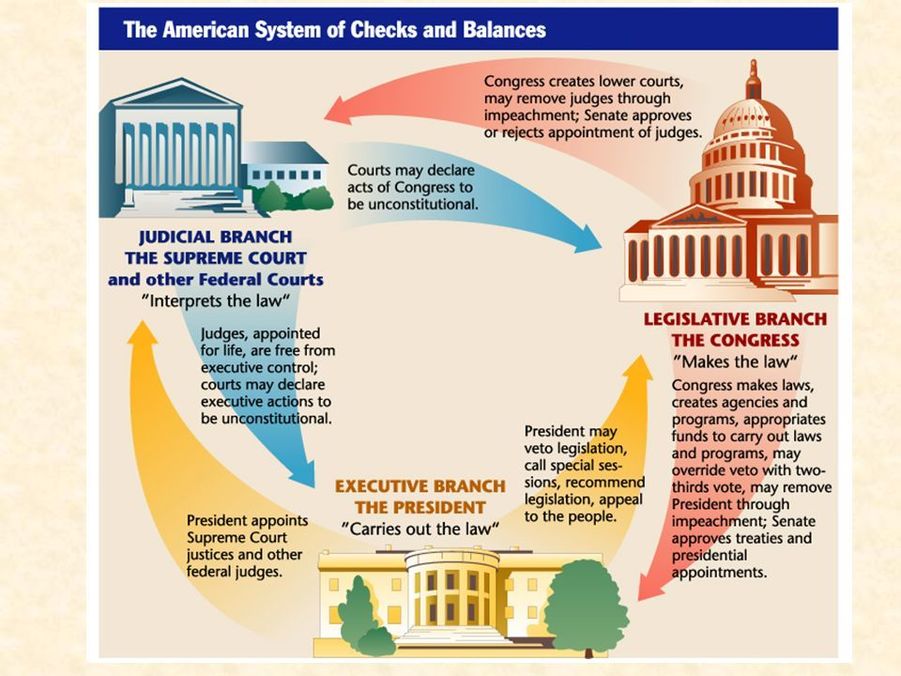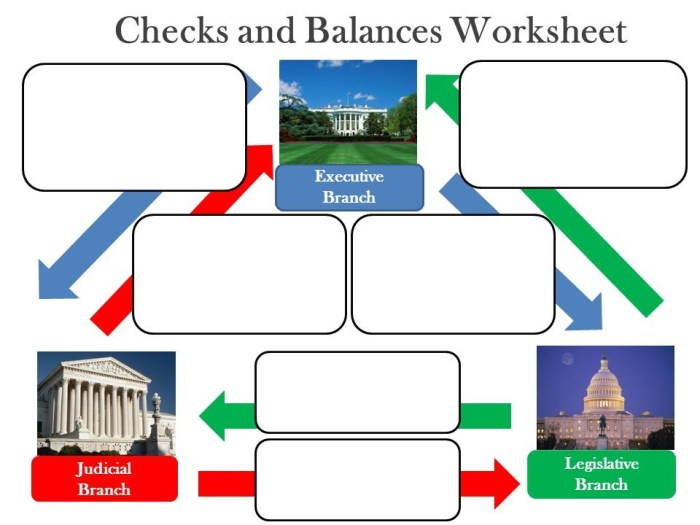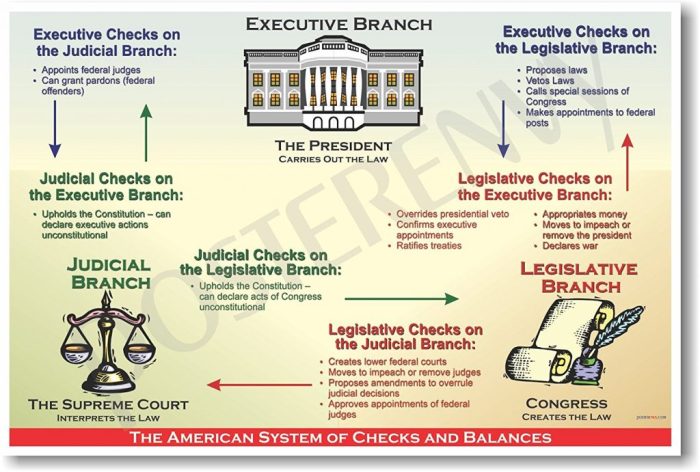The checks and balances system a worksheet – The checks and balances system, a cornerstone of democratic governance, has intrigued political scientists for centuries. This worksheet provides a comprehensive overview of the concept, its historical evolution, and its practical applications. Through a journey into the intricate web of powers and limitations, we unravel the delicate balance that safeguards our liberties.
The checks and balances system ensures that no single branch of government can become too powerful. It divides power among the legislative, executive, and judicial branches, granting each the ability to check the actions of the others. This intricate system has its roots in ancient Greece and has been refined over time to meet the challenges of modern democracies.
The Checks and Balances System

The checks and balances system is a fundamental principle of democratic government that divides power among different branches of government to prevent any one branch from becoming too powerful. It ensures that no single branch can dominate the others and that the government remains accountable to the people.
Separation of Powers
The separation of powers is the division of government into three distinct branches: legislative, executive, and judicial. Each branch has its own powers and responsibilities, and no branch can exercise the powers of another branch.
- Legislative Branch:Makes laws, sets taxes, and declares war.
- Executive Branch:Enforces laws, conducts foreign policy, and commands the armed forces.
- Judicial Branch:Interprets laws, resolves disputes, and protects individual rights.
Institutional Checks
In addition to the separation of powers, there are also institutional checks that exist between the branches of government.
- Veto Power:The executive branch can veto laws passed by the legislative branch.
- Judicial Review:The judicial branch can declare laws passed by the legislative branch and actions taken by the executive branch unconstitutional.
- Impeachment:The legislative branch can impeach the president and other high-ranking officials.
Checks and Balances in Practice
The checks and balances system operates in real-world political systems in a variety of ways.
- Checks on the President:Congress can override presidential vetoes, impeach the president, and investigate executive branch actions.
- Checks on Congress:The president can veto laws passed by Congress, and the Supreme Court can declare laws unconstitutional.
- Checks on the Supreme Court:Congress can impeach Supreme Court justices, and the president appoints and the Senate confirms new justices.
Historical Case Studies, The checks and balances system a worksheet
The checks and balances system has been tested and challenged throughout history.
- Marbury v. Madison (1803):Established the principle of judicial review, giving the Supreme Court the power to declare laws unconstitutional.
- Dred Scott v. Sandford (1857):Demonstrated the limits of judicial review, as the Supreme Court ruled that slaves were not citizens and could not sue in federal court.
- Watergate Scandal (1970s):Highlighted the importance of checks and balances, as Congress investigated and impeached President Nixon for abuse of power.
Contemporary Issues
The checks and balances system faces a number of challenges in modern democracies.
- Partisan Polarization:Increased polarization between political parties can make it difficult for the branches of government to work together.
- Gridlock:When the different branches of government are controlled by different parties, it can lead to gridlock and make it difficult to pass legislation.
- Judicial Activism:Some critics argue that the Supreme Court has become too activist and is making decisions based on political ideology rather than the law.
Detailed FAQs: The Checks And Balances System A Worksheet
What is the main purpose of the checks and balances system?
To prevent any one branch of government from becoming too powerful.
How does the separation of powers contribute to checks and balances?
By dividing power among different branches, each with its own unique functions and responsibilities.
What are some examples of institutional checks?
The power of the legislature to impeach the president, the power of the executive to veto legislation, and the power of the judiciary to declare laws unconstitutional.

